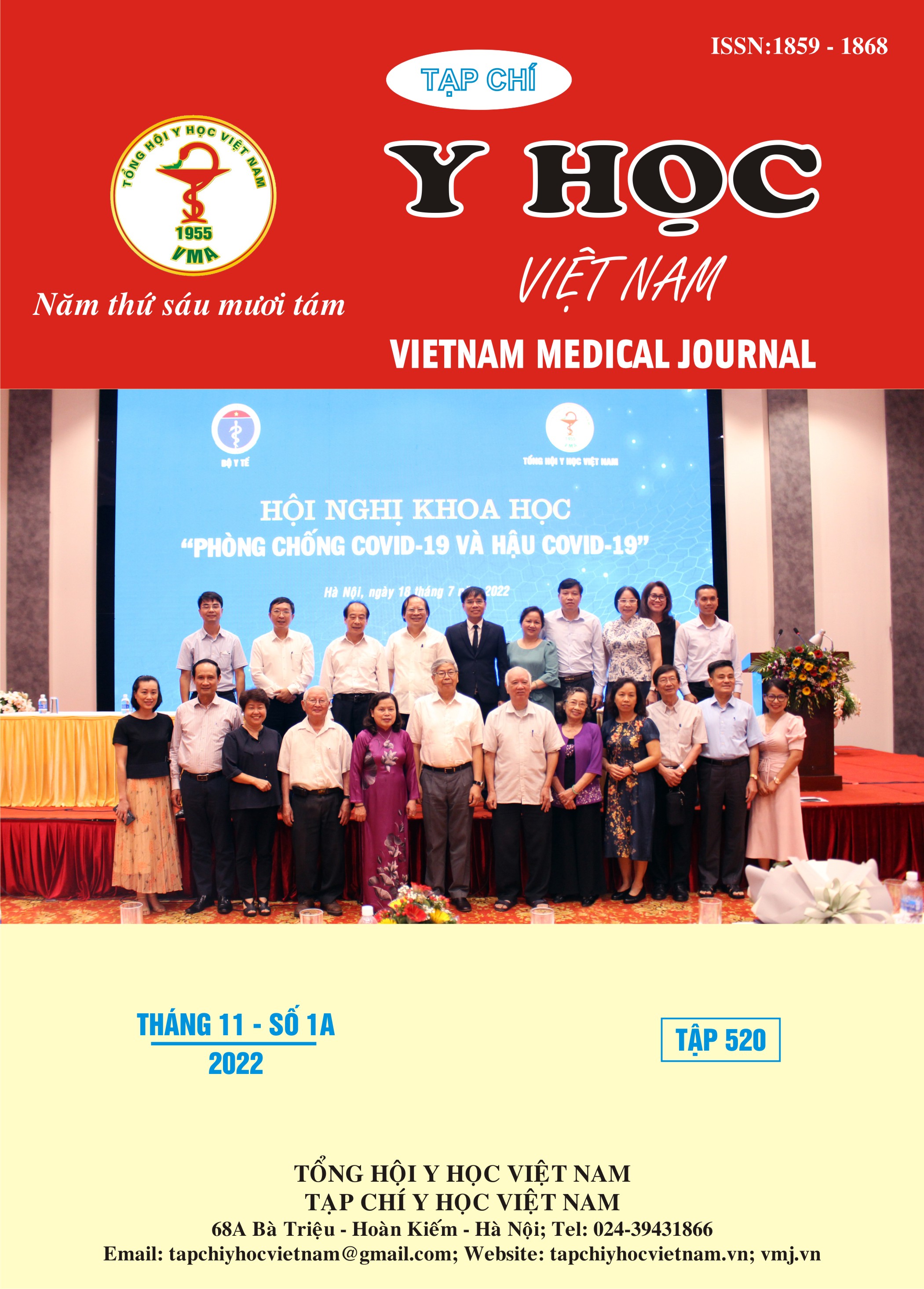CHARACTERISTICS OF HAEMOSTATIC PARAMETERS IN PREGNANT SYSTEMIC LUPUS ERYTHEMATOSUS AT BACH MAI HOSPITAL
Main Article Content
Abstract
Objectives: Systemic lupus erythematosus (SLE) is considered a hypercoagulable condition. So, SLE pregnancies have a higher risk of thrombosis than healthy pregnancies. Therefore, this study aims to observe the change of some hemostatic markers in SLE pregnancies compared to healthy pregnancies. Subjects and methods: a prospective, cross-sectional descriptive study including 103 SLE pregnancies and 30 healthy pregnancies as a control group. Hemostatic parameters performed include PT, APTT, fibrinogen, D dimer (DD), Fibrin monomer (FM) concentrations and platelet. Results: PT, APTT, fibrinogen concentrations and platelet were similar in the two groups. In SLE pregnancies, the mean concentrations of DD and FM were 1.584 ± 1.341 mg/L and 16.56 ± 35.57 mg/L, were significantly higher than normal pregnancies (p = 0.015, p = 0.001, respectively), especially middle and late pregnancy. The percentage of elevated DD concentrations (> 0.5 mg/L) was 83.5%, similar in healthy pregnancies (p = 0,210). The percentage of increased FM concentrations (> 6.0 mg/L) was 28.2% but the healthy pregnancies were not (p = 0.001). DD and FM concentrations were moderately correlated (r2 = 0.20; p < 0.001) while in healthy pregnancies, they were not correlated (p = 0.244). Conclusions: The baseline hemostatic parameters indices and D dimer had kinetic changes with gestational age, but there was no difference between lupus and healthy pregnant women. Elevated FM values in pregnant women with lupus suggest an increased risk of thrombosis and should be used for patient monitoring.
Article Details
Keywords
coagulation, thrombotic, SLE pregnancy
References
2. Heit, J.A., et al., Trends in the incidence of venous thromboembolism during pregnancy or postpartum: a 30-year population-based study. Ann Intern Med, 2005. 143(10): p. 697-706.
3. Mok, C.C., et al., Incidence and risk factors of thromboembolism in systemic lupus erythematosus: a comparison of three ethnic groups. 2005. 52(9): p. 2774-2782.
4. Katz, D. and Y.J.B.B.J.o.A. Beilin, Disorders of coagulation in pregnancy. 2015. 115(suppl_2): p. ii75-ii88.
5. Szecsi, P.B., et al., Haemostatic reference intervals in pregnancy. Thromb Haemost, 2010. 103(4): p. 718-27.
6. Joly, B., et al., Comparison of markers of coagulation activation and thrombin generation test in uncomplicated pregnancies. Thromb Res, 2013. 132(3): p. 386-91.
7. Li, A., et al., Establishment of reference intervals for complete blood count parameters during normal pregnancy in Beijing. 2017. 31(6): p. e22150.
8. Wang, M., et al., Reference intervals of D-dimer during the pregnancy and puerperium period on the STA-R evolution coagulation analyzer. Clin Chim Acta, 2013. 425: p. 176-80.
9. Schutgens, R.E., et al., The role of fibrin monomers in optimizing the diagnostic work-up of deep vein thrombosis. Thromb Haemost, 2007. 97(5): p. 807-13.


